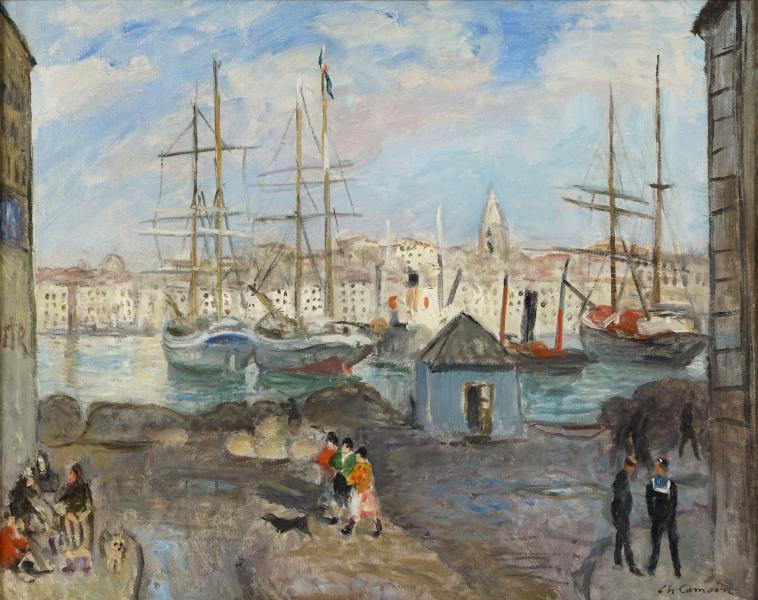Marseille, le quai aux huiles, poissonnières et marins, 1928
Oil on canvas, signed lower right.
65 x 81 cm
History :
Marcel Bernheim Gallery, Paris (1928, titled Les Trois poissonnières)
M&Mme Henri Galilée estate
Private collection, France
Galerie Alexis Pentcheff, Marseille
M&Mme C. estate, South of France
Expositions :
Exposition Charles Camoin, Galerie Druet, Paris, 1929, n°4
Exposition Inaugurale, Galerie Alexis Pentcheff, Marseille, 2015, illustrated on exhibition catalogue p.83.
Bibliography :
Danièle Giraudy, Charles Camoin, Editions les Imprimeries Réunies, Lausanne, 1972, illustrated on p.102 et described on n°313 p.198.
"It was with apprehension that Charles Camoin was about to see the Customs Canal destroyed in his native city in 1927.
This maritime right-of-way, denied its usefulness since the removal of the trading warehouses that surrounded it, had nevertheless become a picturesque nautical society of boaters that the painter loved to frequent.
A period photograph, published in the regional press, shows him at the bedside of the sea cordon, whose death warrant has already been signed by the town councillors with the following caption: "Before it disappears, a painter hastened to fix on canvas the picturesque and the color of the old canal of the Customs and its bridges, which will soon be only memories."
Memories are undoubtedly already in this painting of 1928, which nevertheless preserves some vestiges at the time when the completion of the filling work is announced.
The little customs house that once stood at the entrance to the canal is still there, living its last moments, planted in a setting where it no longer has any business. The water still seems to seep through the embankments that have not yet been smoothed or paved.
This somewhat confused configuration of the site in full metamorphosis adds to the uncertainty of its future, materialized by the three groups of characters that populate this canvas, isolated on three tongues of untied earth.
Whatever future the Flaissières municipality may have predicted for the renovated district, port life has meanwhile resumed its rights and it is here, before approaching the other side of the port towards the rue de la Bouterie, that sailors on the prowl first come to hang out."
Giulia Pentcheff, excerpt from the Catalogue of the Inaugural Exhibition of the Alexis Pentcheff Gallery, Marseille, 2015, p.82.

